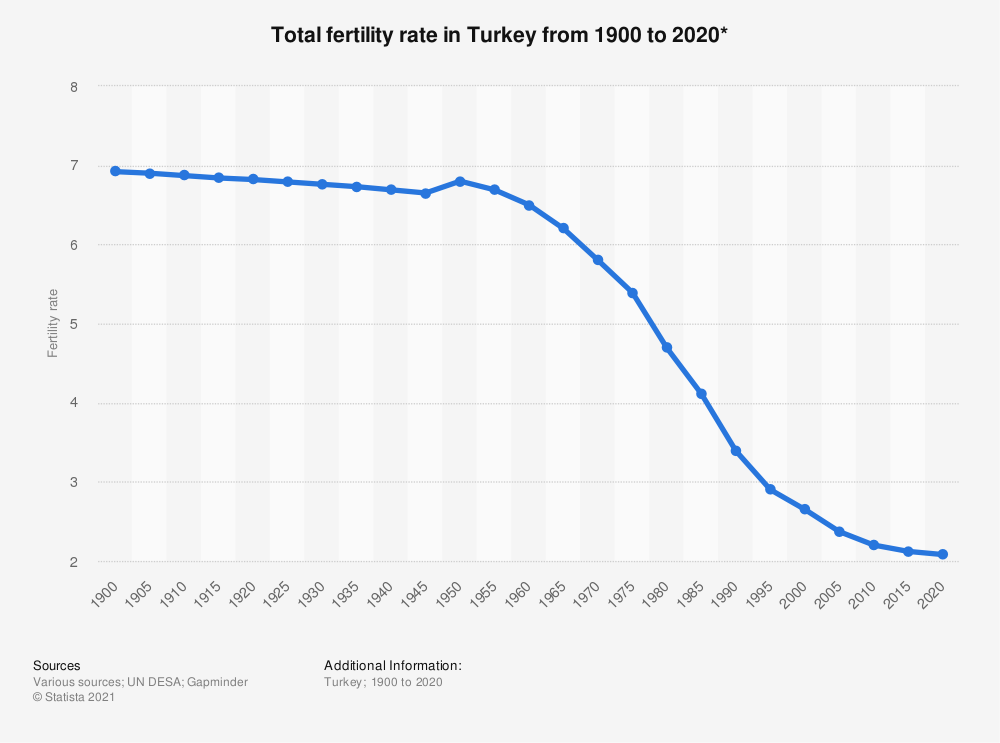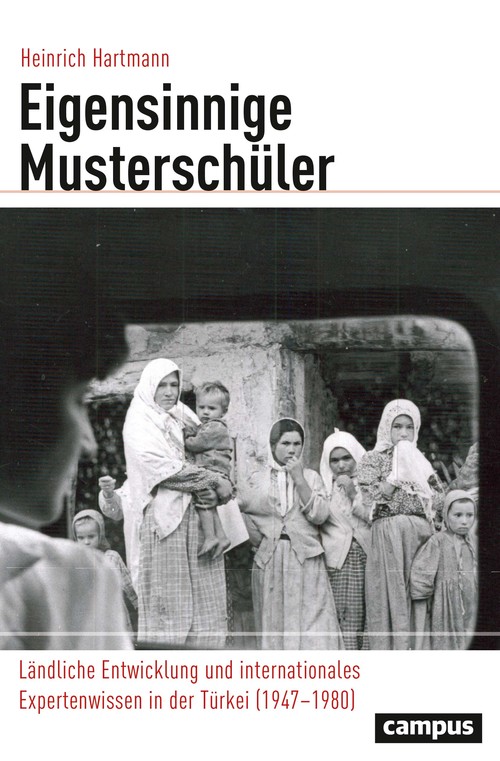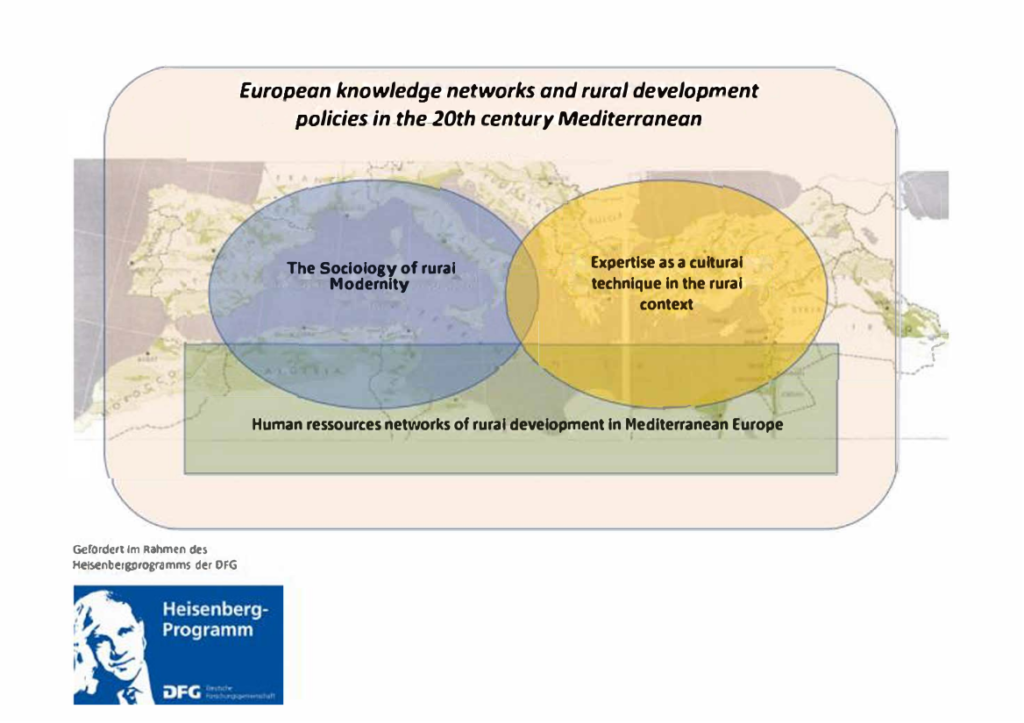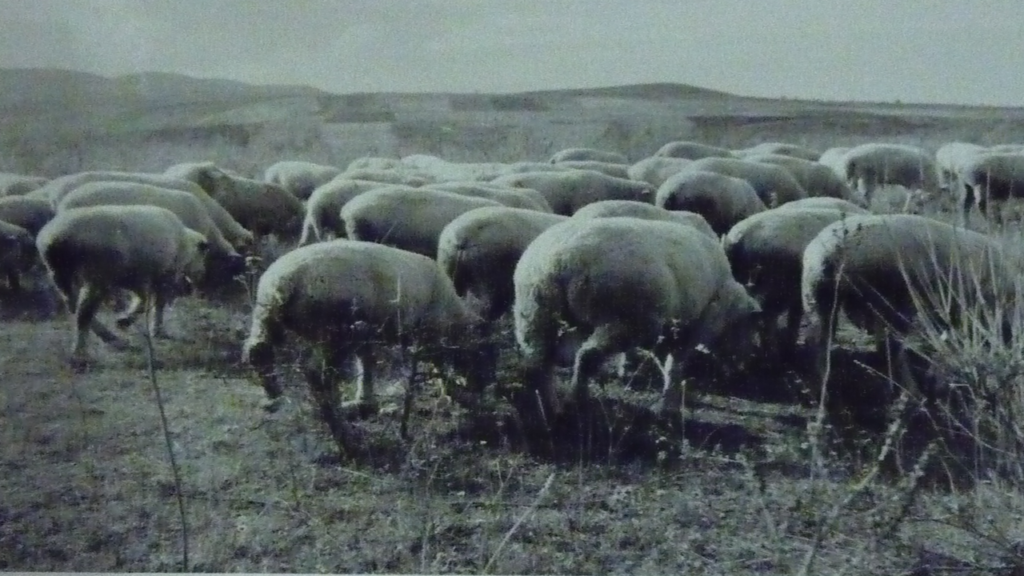From Demography to the Rural Development—in Turkey and Beyond
Author: Heinrich Hartmann
10 December 2021
At the heart of what became my habilitation lies a fierce interest in European demographic anxieties about Turkey’s fast-growing population in the 20th century, especially in the immediate post-Second World War decades. Turkey’s rapid population growth in the 1950s and 1960s—its population grew by almost 3 percent per year in this period—was an obsession of many Westerners over the course of the following decades, starting even before the arrival of the first “Gastarbeiter” in Germany. From my own experience, discussions of population growth in Turkey—whether in a scholarly or lay public setting—immediately triggers people to relate this to long-enduring anxieties about Western European civilization being overrun by “the Turks.” This reflexive response has even intensified over the past 20 years (a period more or less coinciding with my academic interest in Turkey). It must itself be understood as a historical phenomenon that is closely connected with a culturalist backlash that has been shared by many European intellectuals[1] based on an increasingly anti-Islamic tendency in Western European public discourse.
If we understand the enduring debates about the Turkish population growth from a 1950s or 1960s perspective, this fear of Turkish demographic trends was less the old Islamophobic “Türkenangst”[2] but, as I would argue, a much more modern fear. It was “modern,” of course, only by contemporary sociological terms, according to which a successful demographic transition was the ultimate proof that a society had reached the next stage of a ‘Rostow-like’ uniform development. It was precisely this form of defining “Modernity” in absolute terms—as the “one best way” —that was later denied to Turkey: German historian Hans Ulrich Wehler warned Europe about the dangers of an ever-growing Turkish population (citing incorrect numbers),[3] explaining how this demographic trend did not correspond to European realities and threatened its demographic development. He did not acknowledge, however, that Turkey was (and still is) making its way through a demographic transition, with birthrates on a constant decline, despite all political interventions from the Turkish government to reverse this trend.
In fact, in the decades after the Second World War, there had been a period in which the perception of Turkey became rather “deculturalized” and secularized, as many Western observers were tempted to believe in the Kemalist tale of “modern Turkey.” However, Turkish demographic dynamics ultimately confronted Western contemporaries with a crisis of meaning in their understanding of the concept of modernity and its spatial orders: Discovering that the European periphery was demographically among the least “modern” regions in the world called into question the assumptions of many academic observers, politicians, economists, and other experts. It also triggered an old concern that was suddenly resurfacing: the fear of the poor rural masses emerging from the peripheries of developed and industrialized regions. “Engineering” the social behavior of these populations and “controlling” their movement grew into an important and powerful regulatory governance technique of the early 20th century, inspiring multiple schemes of internal colonization within both authoritarian contexts and democratic societies.[4] “Regulating” these dynamic populations primarily meant affixing them to their rural “homelands” – and thereby ignoring what were often century-old patterns of migration and creating an image of stable, traditional societies that was wholly fictional. Preventing migration into Western Europe’s urban centers grew into a shared Western European obsession, which in turn became the dominant paradigm for sociological research on rural populations in early 20th century Europe. This line of research had a significant impact on the emerging field of rural sociology and its understanding of village societies.[5]
In the early 20th century, the peasant population of Europe’s southern periphery and its migratory potential, especially that of Turkey, challenged this understanding. The will to regulate migration in the decades after the Second World War also represented a quest for stability and security and, as such, was understood as a modern means of maintaining European stability. The evolution of a new köy sosyolojisi (‘village sociology’) in Turkey was thus much more than just an academic innovation that drew on the momentum of Kemalist modernization. It is worth telling this story from an international—or perhaps transnational—perspective if we want to consider the multitude of cross-border relationships between actors who were not necessarily acting as representatives of their respective countries. Today, there is a growing scholarly interest in this period of Turkish modernization efforts.[6] In the 1960s, many foreign experts were fascinated by Turkey as a blank (and very accessible) canvas on which their ideas of rural development could be enacted. The artificiality of this discourse—which did not engage with the particularities of the Anatolian hinterland and the imprint left there by violent conflicts, population exchanges, and the Armenian genocide—did not occur to these expert communities, whether Turkish or foreign.
This new approach to the Turkish village population in the first decades after the Second World War coincided with the great rediscovery of the “rural,” a renewed anthropological interest in the countryside as well as in programs to enhance rural education.[7] Of course, such a scholarly movement was not uniform, and the social and political dynamics in Turkey—including the end of single-party rule, the capitalist policies of the Menderes government, the political turmoil in 1960 culminating in a coup d’état, and the following period of planned economics—all had an important impact on the practices of modernization and development programs targeted at the country’s rural areas. From a transnational perspective, this tumultuous context contributed to making the Turkish example unique in the sphere of international development. Furthermore, a political context in which international expertise was welcomed coincided with a new methodological and technological approach to investigate and engineer demographic dynamics in the countryside, in the postwar decades.
The early 1930s village studies as well as the family planning surveys that were conducted in the Turkish countryside in the 1960s at first seem to stem from very contrasting ideological backgrounds. On closer inspection, however, there were not only personal continuities, which saw village sociologists find a place in Cold War social science, but also methodological ones. Interviewing village populations was always a delicate issue and involved serious reflection on the potentially confounding role of local powerbrokers or gender-related issues when accessing the opinion of villagers. American sociologists like Daniel Lerner, Frederick Frey, or Richard Robison took advantage of their complex experiences from their research in Turkey to make their methodology applicable to a broader range of development studies.[8]
Turkish development and modernization policies had gained prominence since the Kemalist turn towards modernity, but ultimately many of their characteristics over the course of the 20th century were not particularly noteworthy within the broader international context of development. What really made them stand out, however, was their shared regional context. Having completed my book on post-war Turkish rural modernization, it now seems the right time to do full justice to the wider regional picture that I found reflected in the sources: the important contribution of Southern European agriculture during the post-war food crisis; the crucial role of the Mediterranean in post-war security politics; and the long-term experiences of a region that was the object of Western European colonial, semi-colonial, and crypto-colonial aspirations and projects that made it a testing ground for international development policies. Many of the agricultural experts in the Mediterranean region had a colonial past, and they often partnered with German experts who had a background as political exiles in Turkey during the Nazi period. Of course, as with the case of Turkey, the “modernist knowledge” of these experts communicated with the vernacular knowledge of multiple local communities and individuals, knowledge which often made the latter the most informed experts on their own circumstances.
In my upcoming research as a Heisenberg fellow for the German Research Foundation (Deutsche Forschungsgemeinschaft, DFG), I will find the time to explore new dimensions of the field of rural development in the Mediterranean region, connecting Turkish experiences not only to similar programs in the North African Maghreb but also to rural development in Spain, Greece, and elsewhere on the Northern shore of the Mediterranean.
Part of this task will include a thorough investigation of the conditions of mutual learning between rural developers and Mediterranean farmers. Model farming will be an important aspect to consider here, starting from the experiences of the Turkish-German Tahirova model farm in the Turkish Marmara region. Breeding projects were meant to adapt animal species and plant varieties to the regional context of dry farming and make it a feasible option for ordinary peasants.
At the same time, all these processes and the social dynamics they entailed were subject to multiple forms of sociological observation, for the purposes of which sociological and anthropological methodologies came into close contact with each other.
It is the aim of this project to discuss interventionist development policies as an inner-European affair, not as one involving the already widely described usual suspects in the decolonized Global South, often former parts of a formal colonial empire. Where, when, and how did expert knowledge on rural development play out in the European context? How did Mediterranean experiences evolve into an entrenched pattern of structural aid in the post-war years? At the end of this project, my hope is to have contributed to solving the question of why so many Western European scholars use the smokescreen of cultural difference to overlook the underlying imperatives of post-war developmentalism.
[1] For a general account thereof, see Claus Leggewie (ed.): Die Türkei und Europa. Die Positionen, Frankfurt: Suhrkamp 2004.
[2] Almut Höfert: Den Feind beschreiben. „Türkengefahr“ und europäisches Wissen über das Osmanische Reich (1450–1600), Frankfurt am Main: Campus 2003.
[3] Hans-Ulrich Wehler: „Die Türkenfrage. Europas Bürger müssen entscheiden“, in: Frankfurter Allgemeine Zeitung, 19.12.2003; Hans-Ulrich Wehler: „Das Türkenproblem“, in: Die Zeit, 12.09.2002. Wehler overestimated the Turkish population at the time by 10 million and cited population growth rates that were based more on his imagination than on statistical facts. As a result, he estimated that the current Turkish population would be about 20 million more people than is actually the case.
[4] Liesbeth van de Grift: “Cultivating Land and People. Internal Colonization in Interwar Europe”, in: Liesbeth van de Grift & Amalia Ribi Forclaz (eds.): Governing the Rural in Interwar Europe, London: Routledge 2015, 68–92.
[5] Daniel Burkhard: “Integration through Land Improvement. Internal Colonization in Switzerland during the First Part of the Twentieth Century”, in: International Journal for History, Culture and Modernity, 3/2 (2015), 233–248. Katja Bruisch: Als das Dorf noch Zukunft war. Agrarismus und Expertise zwischen Zarenreich und Sowjetunion, Köln: Böhlau 2014.
[6] Begüm Adalet: Hotels and Highways. The Construction of Modernization Theory in Cold War Turkey, Stanford: Stanford University Press 2018; Ali Erken: America and the Making of Modern Turkey: Science, Culture and Political Alliances, New York: I. B. Tauris 2018.
[7] Daniel Immerwahr: Thinking Small. The United States and the Lure of Community Development, Cambridge: Harvard University Press 2015.
[8] See Daniel Lerner: The Passing of Traditional Society. Modernizing the Middle East, Glencoe: The Free Press 1958; Frederick Frey, “Surveying Peasant Attitudes in Turkey,” in: Public Opinion Quarterly, 27/3 (1963), 335–355; Begüm Adalet, “Questions of Modernization: Coding Speech, Regulating Attitude in Survey Research”, Comparative Studies in Society and History, 57/4 (2015), 912–941; Begüm Adalet: Hotels and Highways. The Construction of Modernization Theory in Cold War Turkey, Stanford: Stanford University Press, 2018; or Ali Erken: America and the Making of Modern Turkey: Science, Culture and Political Alliances, New York: I. B. Tauris, 2018.
Cited literature, further reading
Begüm Adalet: Hotels and Highways. The Construction of Modernization Theory in Cold War Turkey, Stanford: Stanford University Press 2018.
Ali Erken: America and the Making of Modern Turkey: Science, Culture and Political Alliances, New York: I. B. Tauris 2018.
Heinrich Hartmann: Eigensinnige Musterschüler. Ländliche Entwicklung und internationale Expertise in der Türkei im 20. Jahrhundert, Frankfurt a. M.: Campus 2020.
Heinrich Hartmann is working as a postdoctoral researcher at the University of Konstanz (Heisenberg Project, funded by the German Research Foundation, DFG). His former research, as part of which he was a visiting scholar at the Orient-Institut Istanbul in 2013–14, dealt with rural development in Post-War Turkey.
Citation: Hartmann, Heinrich From Demography to the Rural Development—in Turkey and Beyond, Orient-Institut Istanbul Blog, 10 December 2021, https://www.oiist.org/from-demography-to-the-rural-development/
Keywords
Turkey; 20st century; research project; Rural Turkey; Development; Mediterranean; Modernization; Population; Orientalism; OII-History & Life Narratives




